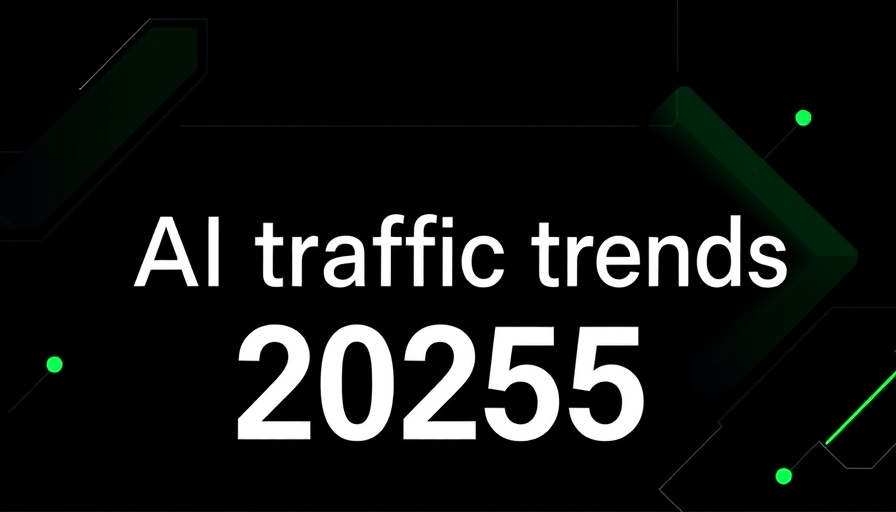
The AI Traffic Landscape in 2025: Insights You Can't Ignore
In the evolving landscape of digital marketing, the emergence of AI platforms as significant traffic sources is capturing the attention of small business owners and marketers alike. A recent study highlights that although AI still represents a small portion of overall internet traffic, its trajectory is undeniably upward. By 2025, AI platforms will account for merely 0.15% of global traffic. However, this figure is critical as it marks a substantial increase from the previous year, growing sevenfold. The implications of this growth are profound for businesses hoping to harness AI-driven traffic.
Understanding AI Traffic Composition: Key Players
When it comes to driving AI traffic, no platform outshines ChatGPT, which commands an impressive 80% of all AI-powered clicks worldwide. Users engaging with ChatGPT spend an average of 10 minutes per session on referred websites—an engagement level that surpasses traditional search engines like Google. This not only demonstrates the platform's reach but also emphasizes its potential in delivering high-quality leads.
On the other hand, Perplexity, which accounts for 15% of AI traffic globally, shows strong performance in the U.S. market, contributing nearly 20%. Users spent about 9 minutes per visit, suggesting that this tool is effectively sending well-targeted traffic to websites. With such data, small business owners might consider optimizing their content for these platforms to capture more traffic.
Competition in AI Traffic: The Case for Gemini and Others
Despite Google’s prominence in the search realm, Gemini’s performance in the AI space is noteworthy but underwhelming when compared to its competitors, driving only 6.4% of AI traffic. Still, it’s important to note that users from Gemini are more engaged than typical Google organic search users, spending 6-7 minutes on websites. For brands looking to diversify their traffic sources, understanding where and how audiences engage with different AI platforms is crucial.
Regional Insights: Who Leads in AI Traffic?
The study reveals interesting regional patterns in AI traffic, with the United States topping the chart at a 0.13% share. Trailing closely behind are the EU and the UK. Notably, ChatGPT saw its traffic quadruple in these regions over just four months—indicating a robust growth trend and affirming the importance of localized marketing strategies. By capitalizing on these insights, marketers can fine-tune their campaigns to better suit the behaviors and preferences of local audiences.
Long-term Value of AI Traffic: More than Just Clicks
While the initial figures for AI traffic might seem low, the value derived from this engagement could be substantial. Users arriving from less prominent AI platforms like DeepSeek or Claude might only contribute a small percentage of overall traffic, but engagement metrics indicate some users dive deep. For instance, while DeepSeek accounts for a mere 0.37% of traffic with a median session time of just 1.5 minutes, certain users spend over an hour engaging deeply with content. This suggests that small businesses should not overlook niche opportunities that may yield high-quality leads even if they come from smaller platforms.
Conclusion: Embracing the AI Wave in Marketing
The growing influence of AI platforms on web traffic cannot be dismissed. Marketers and small business owners must start exploring ways to integrate these insights into their strategies to stay ahead of the curve. As businesses navigate this shift, understanding audience behavior across different AI channels will be essential in harnessing the potential of these emerging platforms. By leveraging the unique strengths of each platform, businesses can create more effective content that resonates with their target audience while driving significant traffic to their sites.
As you adapt to these changes, consider how your marketing approach could further embrace AI-driven opportunities. In the fast-paced world of online marketing, staying informed and agile is paramount. This is an invitation to jump into the fray, test different strategies, and ultimately discover what resonates best with your audience. Remember, the landscape is always changing; those who adapt will thrive.
 Add Row
Add Row  Add
Add 




Write A Comment